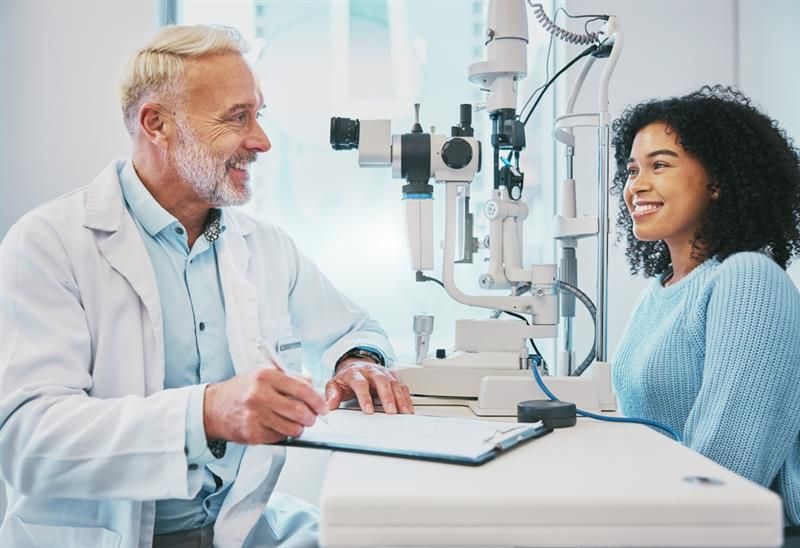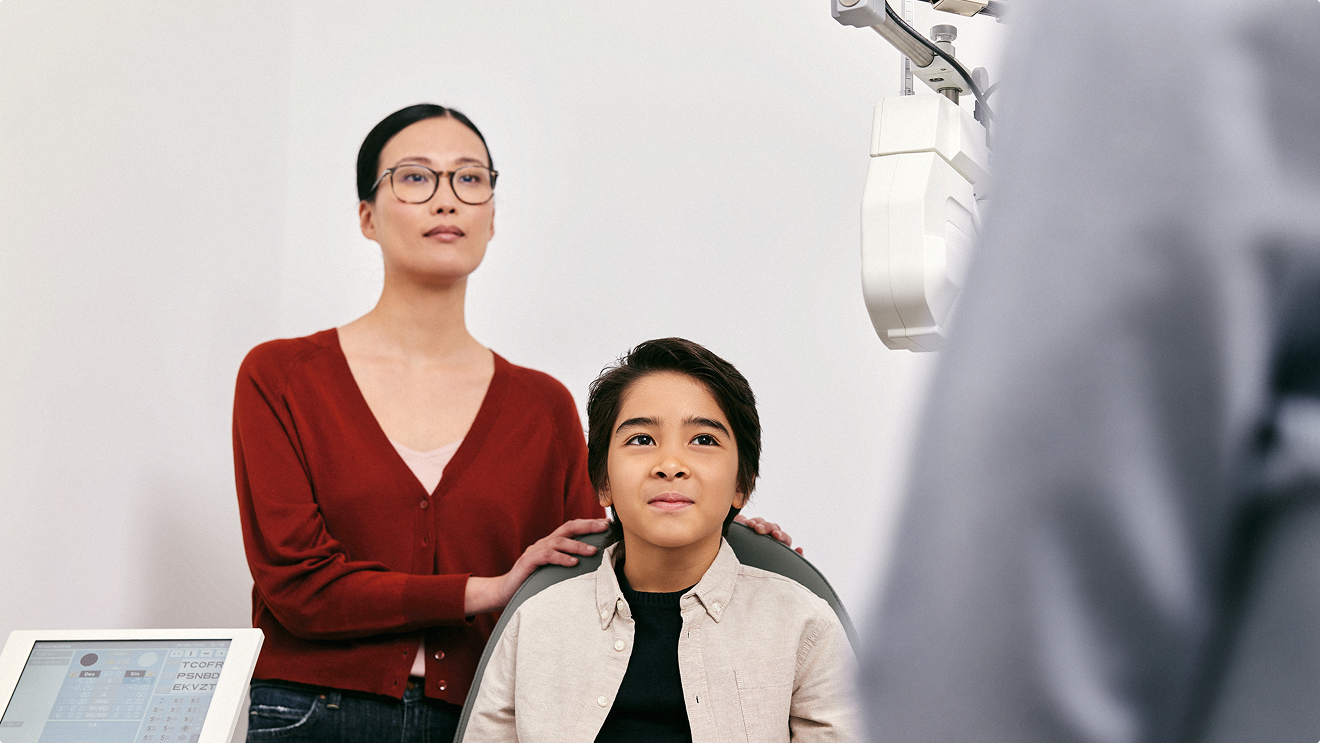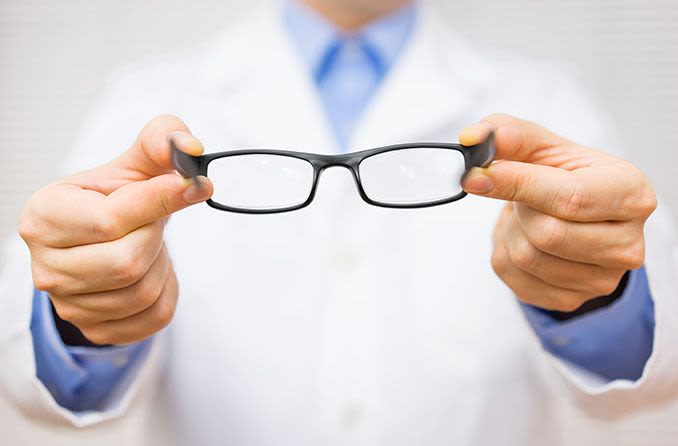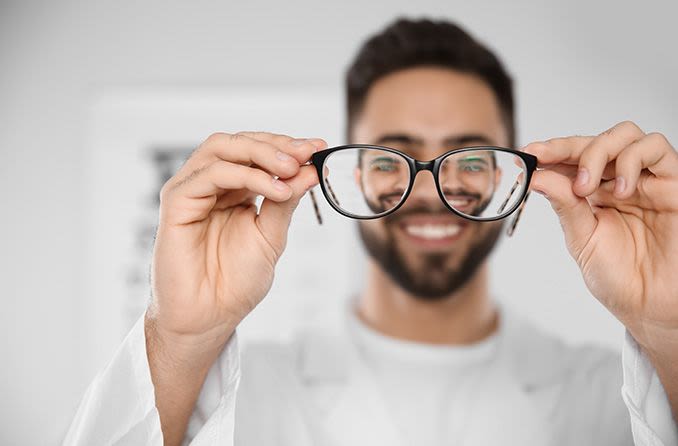The clear link between ADHD and eyesight
Research shows a strong connection between attention-deficit/hyperactivity disorder (ADHD) and the eyes. Because of this, an eye exam could help confirm an ADHD diagnosis, offer new treatment options or even reveal a completely different cause for the symptoms.
These are some of the ways the eyes can be linked with ADHD and ADHD-like symptoms:
- Vision problems, like convergence insufficiency, are more common in people with ADHD. Treating these issues can improve symptoms and make it easier to focus on everyday tasks.
- Some eyesight issues cause attention problems on their own. In some cases, they can be misdiagnosed as ADHD.
- People who have ADHD can struggle with visual processing, which makes it harder to read, focus or pay attention.
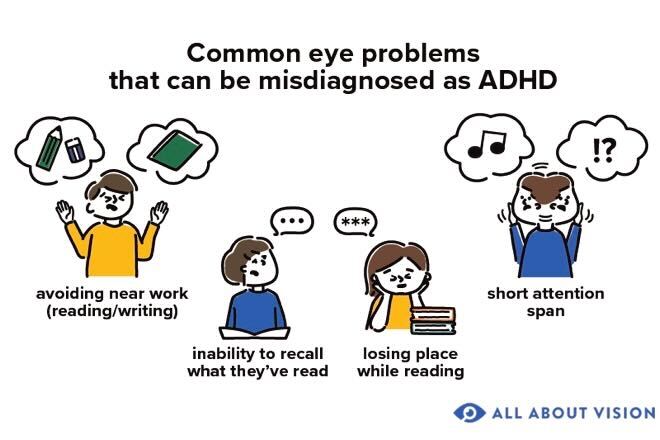
There are three main types of ADHD:
- Inattentive – It’s harder to pay attention, follow directions and absorb the information in reading material or conversations.
- Hyperactive-impulsive – It’s harder to sit still (hyperactive) and control actions without thinking them through (impulsive).
- Combined – A combination of the first two types. Combined ADHD is the most common type.
Vision issues can affect someone with any type of ADHD. Eyesight problems can also resemble all three types, but they’re more likely to cause attention-related symptoms than hyperactive.
Common vision problems associated with ADHD
The research is clear: Certain vision problems are more common in people with ADHD. Kids with ADHD, in particular, are almost twice as likely to have eyesight issues.
These conditions can usually be treated or managed with an eye doctor’s help. It’s important to get a diagnosis and start treatment as early as you can, especially in children. This can improve their quality of life and prevent things from getting worse.
ADHD and convergence insufficiency
Convergence insufficiency is when the eyes don’t properly focus together on close-up objects. This can make one eye turn outward when you look at a near object (both eyes should turn inward).
People with ADHD are three to five times more likely to have convergence insufficiency than people without ADHD, according to two reviews of other studies (Molecular Psychiatry, 2022, and Acta Scientific Ophthalmology, 2023).
Children with this condition may have a hard time doing close-up activities, like reading a book or using a computer or mobile device.
It can also cause:
- Eye discomfort or fatigue
- Blurry vision
- Double vision
- Headaches
An eye doctor can use specific tests during a pediatric eye exam to check for convergence insufficiency.
If it’s diagnosed, the doctor may recommend starting vision therapy and at-home eye exercises. These can strengthen a child’s vision and may help improve certain ADHD-like symptoms.
ADHD and strabismus
Strabismus is when one or both eyes don’t line up correctly. Sometimes the misalignment comes and goes, and other times, it’s always there.
Strabismus is often known as “crossed eyes,” but the eye(s) doesn’t always point inward. It can also point up, down or outward (sometimes called being “wall-eyed”).
People with ADHD may be two to six times more likely to have strabismus, according to scientific reviews.
There are several ways eye doctors can help manage and treat strabismus. Some children outgrow mild strabismus over time, but this should never be assumed. Untreated strabismus can cause amblyopia (lazy eye), which can lead to permanent visual impairment.
ADHD and astigmatism
Another connection between ADHD and vision is astigmatism. This is when the eye’s cornea (the front, clear part of the eye) or crystalline lens (the flexible, transparent structure behind the pupil and iris) is imperfectly shaped, making your vision blurry.
Studies show that almost twice as many people with ADHD have astigmatism as those without ADHD.
Astigmatism can usually be corrected with prescription eyeglasses or contact lenses. An eye doctor can give you a prescription for glasses or contacts after an eye exam.
ADHD and farsightedness
Farsightedness (hyperopia) makes near objects look blurry. Most farsighted people have a shorter eyeball shape or a slightly flatter cornea.
Studies show that nearly twice as many people with ADHD are farsighted. However, ADHD and nearsightedness (myopia) don’t seem to be connected.
Like astigmatism, prescription glasses and contacts can correct farsightedness.
Some children will outgrow farsightedness, but they still need to see an eye doctor. If it gets worse, it could lead to strabismus or amblyopia.
Other eye-related issues
There’s a connection between ADHD and accommodation, which is the way each eye automatically adjusts itself to focus on a near object. In children with ADHD, each eye may not focus on close-up objects (accommodate) as well as in children without ADHD.
Accommodative issues aren’t the same as convergence insufficiency (which involves both eyes working together), but they can be related.
Kids and teenagers with ADHD can also interpret colors and contrast differently. They may have a reduced sense of:
- Color perception – How sensitive you are to differences between colors (different from color blindness)
- Contrast sensitivity – How well you can see objects or details when they’re nearly the same shade as their background
There isn’t a clear link to these problems in adults who have ADHD.
These issues can also be caused by other conditions, so it’s important to see an eye doctor if you notice any changes in your vision.
READ MORE about recognizing the signs of vision conditions vs. ADHD
Why is ADHD linked to eye problems?
Researchers aren’t completely sure why people with ADHD have certain eye conditions more often than others. ADHD is a very complex condition that isn’t completely understood.
While the exact connections aren’t clear yet, the eye changes may be related to these factors:
- Brain changes – ADHD is linked to parts of the brain that control attention and executive function (the brain’s “management” system for planning, focusing, remembering instructions and controlling impulses). But these areas are also involved with eye movement, which could affect the way the eyes work together as a team.
- Dopamine – People with ADHD have an imbalance of the messenger chemical dopamine in their brains. Dopamine is well known for its “feel-good” reward effects, but it also helps your retina (in the back of the eye) process color, contrast and spatial awareness.
- Development – ADHD is a neurodevelopmental disorder, which means it starts when a baby is still growing in the womb. Parts of the eyes and brain come from the same early tissue, so brain development issues could be tied to certain eye problems.
Why vision problems can be misdiagnosed as ADHD
It can be tough to concentrate on a task when your vision is blurry or unclear. This can resemble inattention, which is one of the main symptoms of two of the three types of ADHD.
These issues can all lead to vision changes or eye discomfort that affects your ability to focus, including:
- Refractive errors, like nearsightedness, farsightedness and astigmatism
- Eye-teaming conditions, like convergence insufficiency and strabismus
- Eye strain
- Eye allergies
- Dry eyes
Convergence insufficiency is one vision condition that can resemble ADHD. Its symptoms can include:
- Difficulty concentrating
- Reading very slowly
- Losing place while reading
ADHD can be hard to diagnose, so it’s easy to see why a doctor might think these symptoms are caused by ADHD.
All of the eye issues above can happen alongside ADHD, too. This is why a correct diagnosis is so important.
An eye doctor can take the information they find during a comprehensive eye exam and work with your or your child’s other doctors. Together, they can find out whether the symptoms are likely caused by:
- ADHD alone
- An eye problem alone
- Both ADHD and one or more vision problems
This can help you or your child get the most effective treatment possible.
School vision screenings and their limitations
School vision screenings are quick checks for obvious problems with a child’s eyesight. While they can be helpful, many of the eyesight issues tied to ADHD and ADHD-like symptoms can cause small changes that aren’t checked during a vision screening.
That means if you only get a school screening, you might miss an important eye condition.
An eye exam, on the other hand, is done by an eye doctor. The eye exam includes specialized tests that look for any issues related to a child’s eyes and vision, including all of the conditions covered earlier.
LEARN MORE about the symptoms of learning-related vision issues
When to consult an eye doctor
When someone has already been diagnosed with ADHD, not treating an eye problem could make their symptoms worse.
Some research also suggests that waiting too long to treat a vision problem could increase a child’s chances of developing ADHD.
In addition, delaying treatment can permanently make eyesight problems worse or lead to other issues in a child’s life. An ADHD-connected condition, like strabismus, can even lead to vision loss if it isn’t managed.
Schedule an eye exam if your child has ADHD, behaviors that could be ADHD or eye-related symptoms, such as:
- Frequent squinting or blinking
- Rubbing their eyes a lot
- Tilting their head to see
- Closing or covering one eye to see
- One pupil looks bigger than the other
- One or both eyes look misaligned
Together, their eye doctor, primary care physician and other members of their care team can work to quickly treat any vision problems and support your child’s health and development.
